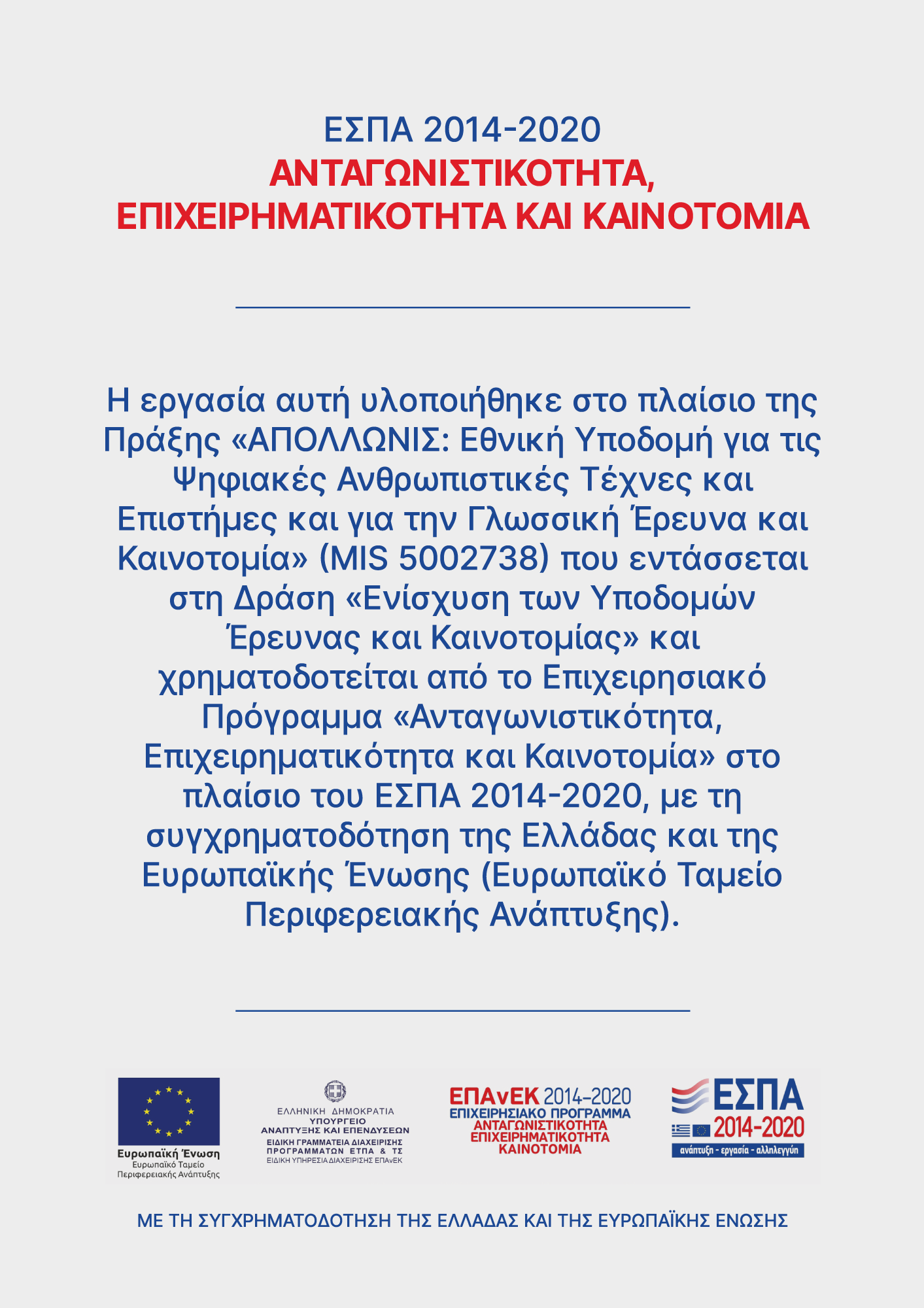Εφαρμογές Επεξεργασίας Φυσικής Γλώσσας στην Πολιτιστική Κληρονομιά και τις Ανθρωπιστικές Επιστήμες
In the first part of this presentation, I will briefly demonstrate three prototype systems that use human language technology to present cultural heritage information. The first system is a robotic guide developed in the European project INDIGO. It interacts with museum visitors via spoken dialogues, using natural language generation to produce tailored exhibit descriptions in multiple languages from information stored in logical form. The second system is a similar robotic guide, but for a three-dimensional virtual museum. The third one is a mobile phone application, which uses natural language generation and text to speech synthesis to provide information to visitors of archaeological sites. In two of these systems, the users can also ask for additional information by formulating natural language questions. In the second part of the presentation, I will speculate about transferring human language technology that has been successfully used in the biomedical domain to the domain of digital humanities. I will use examples from the European project BioASQ, which organizes competitions to push towards systems that will allow biomedical experts to retrieve more efficiently information from scientific articles and databases.
Ion Androutsopoulos
Department of Informatics, Athens University of Economics and Business; and
Digital Curation Unit, Institute for the Management of Information Systems, Research Centre “Athena”
